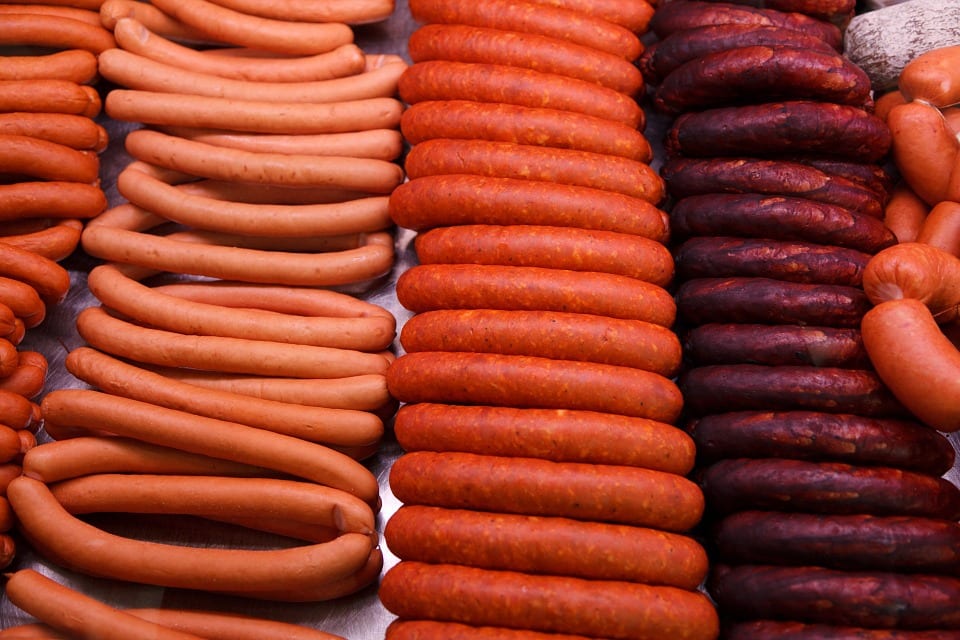This article is for two kinds of people: the brave, who will not let knowledge deter them from eating hot dogs, and the people who would never touch a hot dog anyway. My grandfather used to say that hotdogs were made from the “lips and a**holes,” and honestly…well, keep reading. You know, if you fall into one of those two categories.
You’ve been warned, though the real answer may not be as terrible as you’re thinking (or as my grandfather described). Not quite.

Photo Credit: Pixabay
In the early 1900s, Upton Sinclair famously uncovered the many misdeeds of the meat industry, and the government has kept a close eye on how animal products go through processing ever since. Prior to that, hotdogs were made up of dog parts, horse parts, and even sawdust – which, you know. Gross.
No matter what kind of hotdog you buy today – beef, pork, turkey, or chicken – they all begin with “trimmings,” or the discarded meat cuts left after the good stuff has been cut away and moved on for processing. It’s mostly fatty tissue, sinewy muscle, meat from the animal’s head, and the occasional liver.

Photo Credit: Pixabay
“Trimmings” can also contain by-products like blood, skin, and even feet of whatever animal is being included (non is human meat, despite recent scares that showed 2% of hotdog samples contained human DNA).
Basically, hotdogs begin as a bunch of inedible gristle, which is then cooked in order to kill the bacteria and turned into meat paste through an emulsion process. After that, it’s ground up and comes out of a sieve resembling hamburger meat. Companies can add other ingredients at this point, like ascorbic acid to aid in curing, water, corn syrup, and various spices for taste.
Many hotdogs also include an ingredient called sodium erythorbate, which the food industry swears isn’t ground up earthworms no matter how the myth persists:
“In contrast to a popular urban legend, erythorbate is NOT made from earthworms, though the U.S. Department of Agriculture reports receiving many inquiries about erythorbate’s source. It is speculated that the similarity in the spelling of the words ‘erythorbate’ and ‘earthworms’ has led to this confusion.”
Notice that no one is saying what it IS, however. You can’t fool me!

Photo Credit: Pixabay
Okay, okay, so no worms are included.
The hamburger-textured stuff then goes through another pureeing process, after which it is pumped into casings and fully cooked. They’re rinsed in water and packaged – USDA-approved and all.
You can check your labels, and if you see “variety meats” or “meat by-products”, you’re probably getting organ material. If you’re getting only muscle and tissue, those labels will say “all beef” or “all pork.”
It’s not a lie, you see – it’s all from a cow or all from a pig. But, you know, it’s the parts that would otherwise go in the trash. Just so you know.






